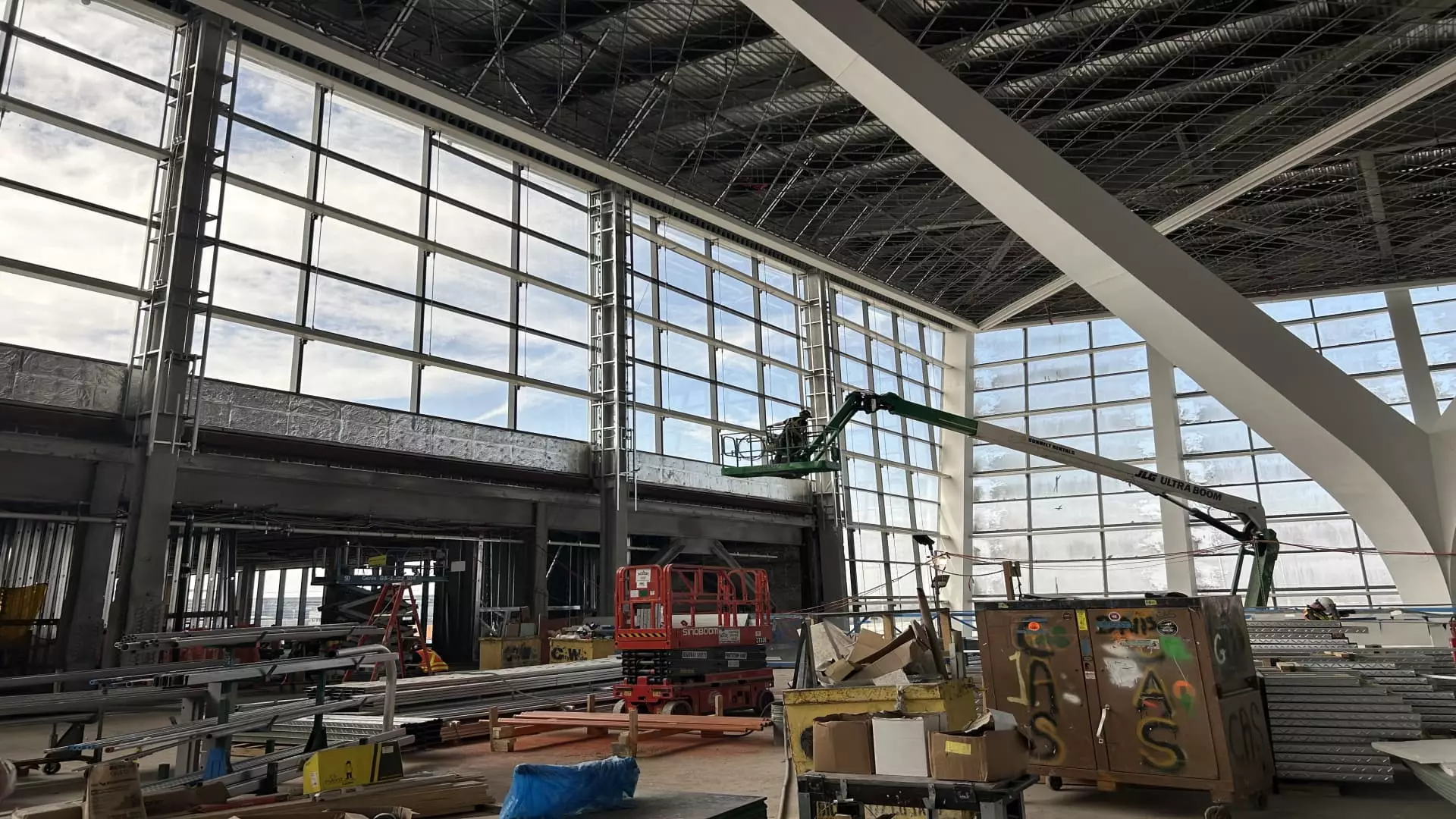The sprawling transformation of JFK Airport’s infrastructure, highlighted by the ambitious $9.5 billion Terminal 1 project, marks a significant chapter in American aviation development. On paper, this new terminal promises a modern, sleek, capacity-boosting hub tailored to international travelers, positioning JFK as a global gateway rivaling the best in the world. Yet, beneath the glitzy veneer of cutting-edge design and strategic planning lies a critical question: is this project a testament to visionary progress, or an extravagant gamble at taxpayer expense, driven more by vanity than practicality?
Boasting a colossal budget that surpasses recent comparable projects, such as LaGuardia’s $8 billion overhaul, Terminal 1’s ambitions seem grandiose even amidst America’s urgent infrastructure needs. While the developers and officials tout its innovative features—such as daylight flooding the interior and a butterfly-inspired layout—these elements often serve more as aesthetic illusions than functional necessities. What is undeniably true is that JFK’s transformation signals a commitment to elevating passenger experience, but in doing so, it risks overcommitting to an aspirational ideal while neglecting the pressing realities of systemic underfunding and operational sustainability.
Quality and Utility: Will the Reality Match the Promises?
The design of Terminal 1 emphasizes passenger convenience, with arrivals, departures, customs, and security all arranged on the same level to eliminate bottlenecks, and extensive retail and lounge areas to “enhance” the travel experience. Yet, history suggests that such high-minded visions frequently fall prey to the chaos of operational realities. Airports are inherently unpredictable ecosystems influenced by fluctuating airline schedules, staffing issues, and security concerns. A terminal’s luxurious interior and optimistic capacity figures do not automatically translate into efficiency if the foundational elements—ground transportation, staffing, security throughput—are not adequately prepared.
Moreover, the project’s focus on international travelers, while understandable given JFK’s strategic location, could skew the airport’s capacity planning. More gates and retail space are designed to cater to a high-value clientele, but this approach risks marginalizing domestic fliers and compounding traffic congestion, especially considering that the broader regional infrastructure remains under strain. The true test will be whether JFK can deliver on operational promises without succumbing to the hubris of architectural excellence alone.
Financial Commitment and Broader Implications
From a financial standpoint, the referendum for such a massive infusion of public funds raises eyebrows. At nearly $10 billion, this project dwarfs many other critical state and federal infrastructure initiatives that desperately need attention—roads, bridges, public transit. While investment in airports is necessary, it should not come at the expense of the broader transportation network’s neglect or become an emblem of overindulgence amidst fiscal austerity.
Additionally, the project’s schedule is optimistic, with a tentative opening in mid-2026—just in time for the World Cup. However, large-scale construction projects of this scope historically face delays, cost overruns, and unforeseen complications. Relying on a major international sporting event as a deadline for completion might be a strategic misstep, providing a tangible target but risking rushed developments and compromised quality.
Furthermore, the project’s environmental footprint warrants scrutiny. Large terminals and expanded infrastructure inevitably contribute to increased carbon emissions, traffic congestion, and urban sprawl. In an era increasingly defined by climate responsibility, the decision to pour billions into what arguably appears as a luxury upgrade without commensurate investments in sustainable practices sends a troubling signal.
Is the End Worth the Means?
While the allure of having a state-of-the-art international terminal is undeniable, the question remains whether this project is a prudent use of public and private resources in an era rife with economic uncertainty. At its core, the Terminal 1 development reflects a policy narrative rooted in competition—surging ahead of other global hubs and projecting American prowess—but it may serve more as a symbol of ambition than tangible benefit for the average traveler.
The chosen aesthetic and functional design, promising light-filled spaces and passenger-centered layouts, are admirable ideals. Yet, they risk becoming superficial features in a complex system that desperately needs operational efficiency, strategic planning, and fiscal responsibility. Before celebrating this monument to modernization, stakeholders must critically ask whether the project prioritizes genuine progress or indulges in an illusion of grandeur built on questionable financial footing. In the end, JFK’s Terminal 1 might become a shining emblem of American ingenuity—or an overreach that falters under its own weight.

